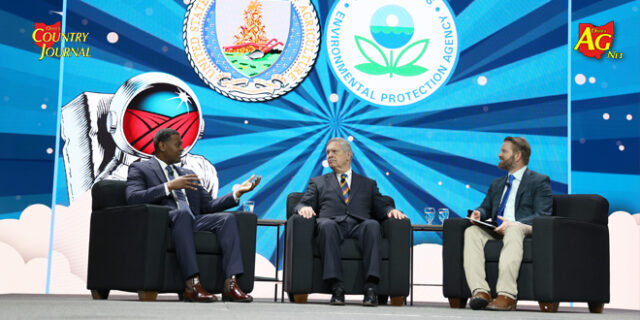By Matt Reese and Dale Minyo
At Commodity Classic, attendees gathered to hear from U.S. Department of Agriculture Secretary Tom Vilsack and — for the first time ever — Environmental Protection Agency Administrator Michael Regan. With both officials at the event, it seemed like a long-awaited announcement regarding the future of Sustainable Aviation Fuel (SAF) could be coming.
Unfortunately, more time is needed to get it right, Vilsack said.
“We’re not in a position today to announce the guidance that will be coming forth from the Treasury Department as it relates to the Sustainable Aviation Fuel and the tax credits that will be available in 2023 and 2024, and the tax credits that will go in place in 2025 and beyond,” Vilsack said. “Now the reason we’re not is because we’re measuring twice and cutting once. We want to make sure that the latest and best information is utilized in the modeling that will inform the Treasury guidance.”
The U.S. Department of Treasury announced in late 2023 that it will use a modified version of the Department of Energy’s (DOE) GREET (Greenhouse gases, Regulated Emissions, and Energy use in Technologies) model as a measurement for determining reductions in greenhouse gas emissions as the agency allocates tax credits for sustainable aviation fuels under the recent Inflation Reduction Act. The law allocates tax credits for biofuels that can demonstrate that they cut greenhouse gas emissions by 50% or more. Components of the GREET model are among the most favorable for corn-based ethanol and the National Corn Growers Association is pushing for the use of a version GREET. Vilsack is too.
“I had two goals in my conversations with my colleagues in the inner-agency working group. One was to ensure that the GREET model was in fact incorporated in this process. At the beginning of the process, that wasn’t necessarily the case but I’m confident now that indeed the GREET model will be part of the guidance,” Vilsack said. “Then in connection with that GREET model I wanted to make sure that biofuels — ethanol and biodiesel — and the feedstocks that provide those fuels have the ability to qualify for the tax credits. That is particularly true of those feedstocks that are generated through climate smart practices — no-till, cover crops, energy efficient fertilizer — the things that you are already using in the field to produce a wide array of the commodities that you raise.”
Like biofuel markets in the past, the final details in the federal policy will play a key role in the future of the massive potential SAF for corn and soybeans.
“The story on SAF is being written as we speak. A lot has to do with policy and part of what has to happen for corn ethanol to play a part in that SAF is good policy and it is right now being decided,” said Tadd Nicholson, with Ohio Corn & Wheat. “It has to do with really obscure things like which computer model they use to judge the carbon intensity score of corn ethanol.
“We prefer the GREET model and right now it’s looking like the EPA is going to be able to use that one, but there are more rules to be to be written on that, so we’re not celebrating completely yet. Using that model is very important for corn ethanol not to be penalized in such a way that it would not fit into this SAF market. Really important things are happening right now, which is why it’s so important to have the work of our associations to really make sure that things are positively happening. Very important decisions are being made for the future of ethanol right now. It just plain is cleaner for the environment than petroleum. That’s the whole reason we’ve been able to insert ethanol into the fuel mix of the United States and it is going to be a cleaner way for us to fly around this country.”
Vilsack also talked about renewed emphasis on facilitating international trade for U.S. agricultural products.
“It’s important for us to diversify our markets away from the reliance on the Chinese market. We’re looking at opportunities in Southeast Asia and in Central America and in South America and it was for that reason we utilized resources under the Commodity Credit Corporation to establish the Regional Agricultural Promotion (RAP) Program,” Vilsack said. “Those are resources that we can put into ag marketing where we’ve not had increases for quite some time. The Foreign Market Development Program the Market Assistance Program — those have historically been funded at pretty stable levels for the last number of years. This RAP program now has over a billion dollars invested in it. We just announced recently a $300 million allocation from that fund and we got over a billion dollars in requests to utilize those resources that are going to allow us to focus on all of the markets other than the top markets. We already spend a great deal of time and effort and resources on those top markets — China, Mexico and Canada. Now this gives us a tremendous opportunity to focus on those lower-level markets. It allows us to have more people, more promotions, more presence in those markets to be able to continue to do the job that you all do on the farm, which is to tout the stability and the safety and the quality of what we raise in this country.”
This aligns with National Corn Growers Association policy emphasized at the 2024 Corn Congress at Commodity Classic. NCGA passed a consensus statement encouraging federal officials to pursue trade opportunities and invest in foreign market development to ensure that the U.S. remains a global leader in corn production and trade.



